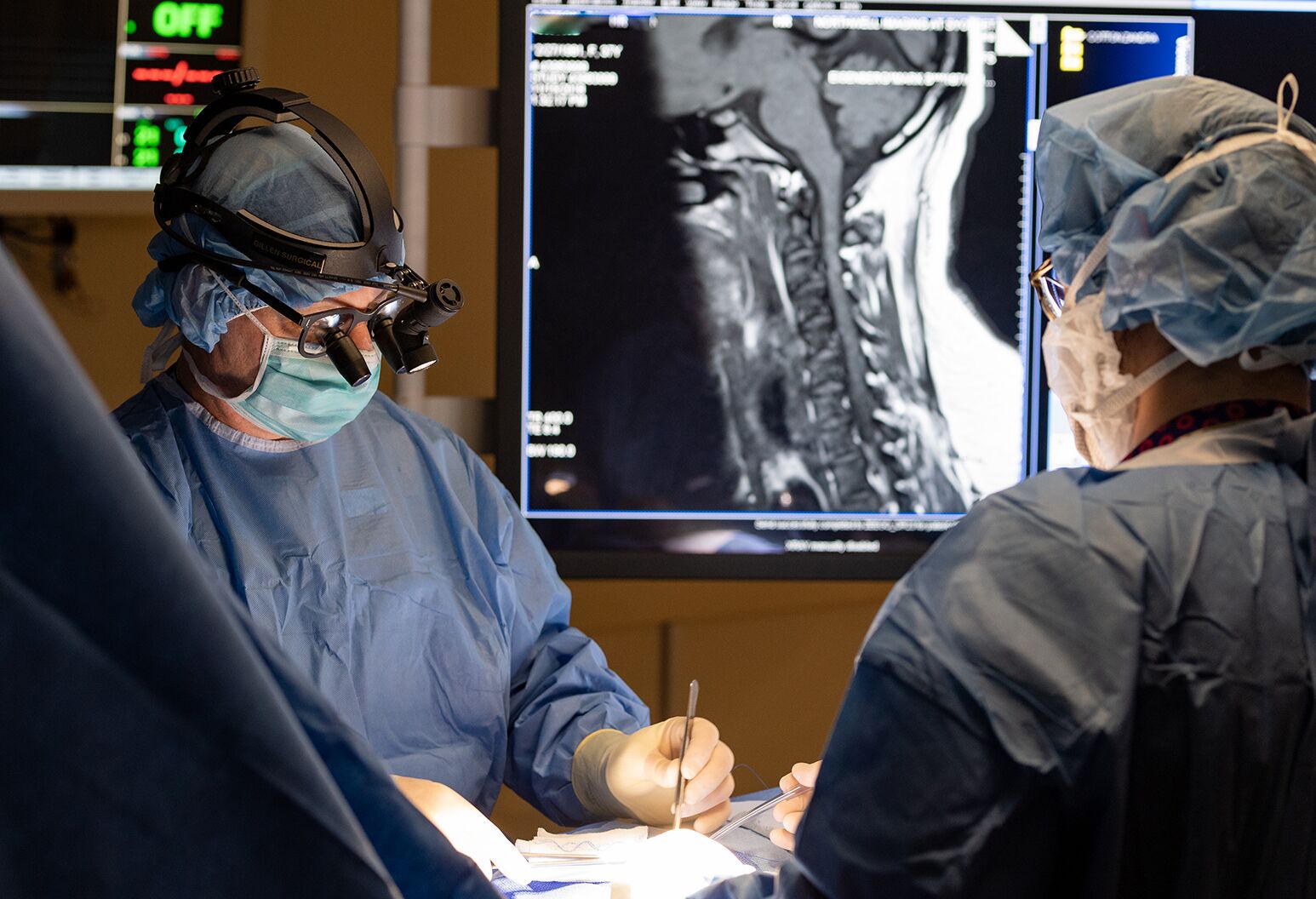Understanding the Prices Included with the Best Spine Surgeons in St Louis MO
Understanding the Prices Included with the Best Spine Surgeons in St Louis MO
Blog Article
A Review of Spine Conditions That Commonly Lead To Surgical Therapies
Back problems such as herniated discs, spinal constriction, and degenerative disc condition frequently require surgical treatments when traditional treatments fall short to reduce consistent symptoms. Comprehending the nuances of each condition and the matching surgical alternatives, such as discectomy or spinal fusion, is crucial for efficient administration.
Herniated Discs
Although numerous individuals with herniated discs might discover alleviation with conservative therapies, surgical procedure ends up being a required consideration when symptoms get worse or continue - best spine surgeons in st louis mo. A herniated disc happens when the soft inner gel of a spinal disc sticks out via its outer layer, potentially leading and pressing nearby nerves to discomfort, feeling numb, or weak point in the extremities
Traditional management normally consists of physical treatment, discomfort medications, and corticosteroid injections, which intend to reduce swelling and boost feature. In instances where these techniques fall short to alleviate devastating symptoms, surgical choices might be explored.
The most typical operation for herniated discs is a discectomy, which includes the elimination of the herniated portion of the disc to alleviate stress on the influenced nerve origin. In much more extreme cases, spinal combination might be needed to maintain the affected vertebrae.
People are encouraged to review the possible threats and advantages of surgical treatment with their healthcare company to make a notified decision. Eventually, the objective of any kind of surgical intervention is to restore function, minimize discomfort, and enhance overall quality of life for people suffering from herniated discs.
Spinal Stenosis
Back constriction occurs when the spaces within the spine narrow, leading to boosted stress on the spine cord and nerves. This condition can develop in numerous areas of the back, consisting of the cervical and lumbar areas, frequently because of age-related modifications, such as degenerative disc condition, arthritis, or enlarging of tendons.
People with back constriction might provide with signs that consist of discomfort, tingling, tingling, or weak point, primarily in the legs or arms. These symptoms can be aggravated by tasks that involve standing or walking, typically leading individuals to look for relief with conservative treatments like physical treatment, medicines, or epidural steroid shots.
Nonetheless, when these non-surgical treatments fall short to provide adequate relief, medical alternatives may be taken into consideration. Common surgical procedures for spine constriction include laminectomy, which involves the removal of component of the vertebra to reduce stress, and spinal combination, which stabilizes the affected area.
Spondylolisthesis
Spondylolisthesis occurs when one vertebra slides onward over another, leading to imbalance of the spinal column. This problem can arise from numerous variables, consisting of genetic problems, injury, or degenerative modifications in the back. It is most commonly observed in the back region, especially at the L4-L5 and L5-S1 degrees.

When non-surgical strategies fail to alleviate signs and symptoms or when significant nerve compression is existing, surgical treatment might be required. Surgical alternatives can include spinal combination or decompression treatments, aimed at bring back placement and relieving neurological signs.
Degenerative Disc Condition

Clients with DDD often experience discomfort that might radiate to the arms or legs, relying on the influenced area of the back. The condition can be diagnosed through a mix of medical examination, imaging researches, and person background. Therapy options normally start with traditional actions, consisting of physical therapy, pain monitoring, and way of life adjustments. Nevertheless, when these strategies fall short to give ample alleviation, medical interventions might be taken into consideration.
Surgical options for DDD might include back combination or synthetic disc replacement, intended at stabilizing the affected section and relieving discomfort (best spine surgeons in st louis mo). Ultimately, the selection of treatment is embellished, considering the extent of the condition, patient health and wellness, and way of living elements
Spinal Lumps

What factors add to the advancement of lumps within the spine, and exactly how do they show up in patients? Spinal tumors can arise from different factors, consisting of genetic proneness, ecological influences, and pre-existing medical conditions. They can be classified as main lumps, stemming in the spine, or secondary lumps, which spread out from various other areas of the body. People might present with a variety of signs, including localized pain, neurological shortages, weak point, or adjustments in bowel and bladder function, depending on the tumor's dimension and location.
Diagnosis normally includes imaging research studies such as MRI or CT scans, which aid define the growth's features and effect on surrounding structures. In analyzing therapy choices, the growth's type, quality, and place are critical factors to consider. Surgical why not find out more treatment may be necessitated to relieve signs, acquire a biopsy, or remove the lump completely. The objective of surgical treatment is typically to decompress neural components and support the back. Adjuvant therapies, consisting of radiation or radiation treatment, may additionally be needed depending on the growth's nature. Early detection and treatment are important for maximizing results in people with spine tumors.
Final Thought
In recap, spinal column problems such as herniated discs, spinal stenosis, spondylolisthesis, degenerative disc illness, and back tumors often necessitate surgical intervention because of their possible to cause substantial discomfort and functional impairment. While conventional therapies might provide momentary alleviation, medical options become vital when symptoms linger or intensify. Timely diagnosis and intervention play an important role in recovering feature and boosting the lifestyle for damaged people, underscoring Resources the significance of detailed spine treatment.

Report this page